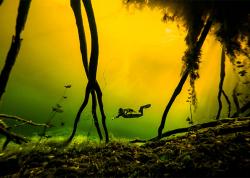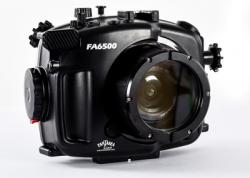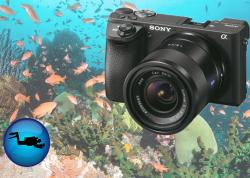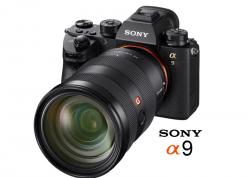Photo Tips for Adventure Diving and Expeditions
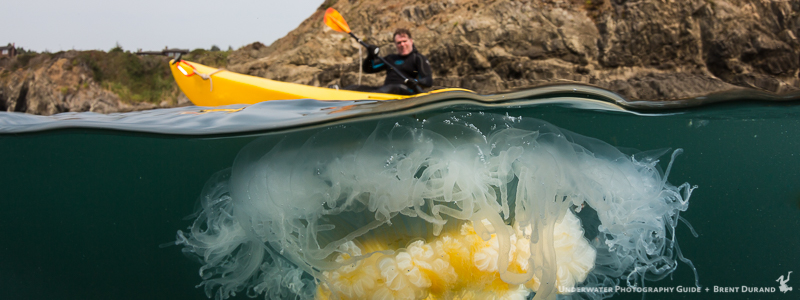
Bleary-eyed, I shifted into neutral and rolled the car to an open space between the trees. Coyotes howled at the new arrival. A horse kicked a bucket off in the dark beyond the fence. I looked up and saw a meteor streak across the sky before settling into my seat for a few hours of sleep on the long drive north.
This wasn’t even the start of the adventures awaiting our group of divers in Mendocino County, California. We kayaked to secluded beaches, freedived offshore pinnacles, scrambled down cliffs in heavy gear, scuba dived through massive sea caves and of course, ate amazing food every night at camp. As a photographer, I had my hands full trying to capture the action each day, as there are a lot of logistics and efficiencies that need to be dialed-in in order to capture some of the best moments of any “do it yourself” dive trip. Here are some tips to help on your next adventure dive or expedition.
1. Do Your Research
This goes without saying. The basics are determining whether you are looking for unique critters, documenting your dive buddies in action or telling a story as a photojournalist. Once you know this, you can start doing more research on what would make an iconic shot (like an abalone or giant green anemone in Mendocino), the marine life of the area, access to dive sites and what gear you will take to get the shots in mind. Do you want a small dome port for close focus wide-angle or a large dome port for split-shots? Will you need to bring your video lights? Is there a dive site you absolutely must dive to find a critter? The list goes on.


2. Know Your Gear Intimately
Adventure diving and expeditions generally don’t allow for as many dives as an easy resort or liveaboard trip, which means that you have less time to get the shots. Knowing your gear inside and out will help you maximize time. What settings will you use for different conditions or photo styles? How will you pair down and streamline your gear for freediving off a kayak? Can you use a multi-purpose lens to shoot wide and macro? Make sure to bring tools in case something comes loose.
When you know your gear well, you’ll also be faster at daily maintenance, allowing you to enjoy more time with your non-photo dive buddies.

3. Have a System
As underwater photographers, most of us have a very precise system for organizing various camera gear, chargers and accessories. Adapting this system to life on the move is essential for adventure diving. You may need to make quick lens and port changes out of your crammed car in windy or misty weather, or change batteries in a dusty parking lot. Finding running water to rinse your gear can be a joke. The last thing you want is to be stressed looking for that focus light clamp you put somewhere you swore you would remember, then finally getting into the water to realize you forgot your dive computer (no, phew, that didn’t happen to me).
If you keep your gear organized then all this “camera admin” (and housing maintenance) will be a breeze.


4. Prepare Your Level of Fitness
Being a photographer is tough work. Not only are you keeping up with the other divers, but you’re carrying your heavy camera, thinking about photo opportunities on the dive and often running or swimming ahead to set up a shot. Staying as fit (or more fit than) your dive buddies will make this hustle a lot easier while also making you a safer diver.

5. Bring Two Cameras, Batteries, Memory Cards
When I'm shooting on the road and posting content online every day, there's no time to waste. Gear maintenance and editing often happen after others have gone to sleep. Here are a few tips to maximize time:
Bring Two Cameras: Taking your camera in and out of the housing takes time and creates more opportunity for a mistake that could lead to a devastating flood. Plus, if you're on an exposed boat, kayak or other places where you shouldn't be opening your housing - you don't have to.
Bring Extra Memory Cards and Batteries: If you're shooting the same gear configuration all you need to do is pop open the housing, swap card and batteries and close it back up. Now you can put the housing back away, ready for action.


There we go - hopefully a step closer to an epic underwater photo adventure. Be safe out there!
Further Reading
RECOMMENDED ARTICLES
SUPPORT THE UNDERWATER PHOTOGRAPHY GUIDE:
The Best Service & Prices on u/w Photo Gear
 Visit Bluewater Photo & Video for all your underwater photography and video gear. Click, or call the team at (310) 633-5052 for expert advice!
Visit Bluewater Photo & Video for all your underwater photography and video gear. Click, or call the team at (310) 633-5052 for expert advice!
The Best Pricing, Service & Expert Advice to Book your Dive Trips
 Bluewater Travel is your full-service scuba travel agency. Let our expert advisers plan and book your next dive vacation. Run by divers, for divers.
Bluewater Travel is your full-service scuba travel agency. Let our expert advisers plan and book your next dive vacation. Run by divers, for divers.





